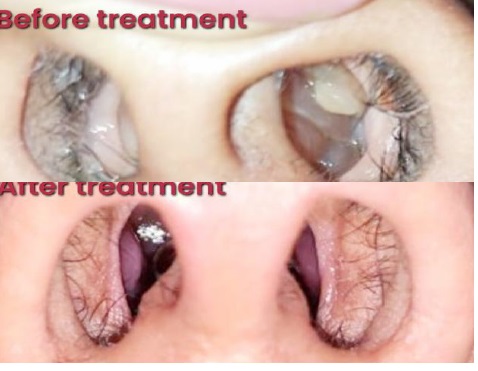Ayurvedic Management of Nasa Arsha w.s.r to Nasal Polyp
DOI:
https://doi.org/10.47070/ijapr.v11i7.2877Keywords:
Nasal Polyp, Nasa Arshas, Kshara Karma, Nasya Karma, Shamana Oushadhis.Abstract
Shalakya tantra has given more importance among the eight branches of Ayurveda, for dealing with the vital sense organs located above the Jatru (clavicle), also considered as Uttamanga in Ayurveda. Arshas is described as one of the Asta mahagada roga by Acharyas and also explained fourfold treatment such as Bheshaja, Shastra, Kshara and Agni karma. The Nasa arshas means Arshas located in the nasal cavity causing nasal obstruction. The predominant Dosha is Kapha and Dushya are Twak, Mamsa and Medho dhatus. Nasaarshas can be correlated with nasal polyps. Nasal polyps are non-neoplastic masses of oedematous, prolapsed, pendenculated nasal or sinus mucosa. It can be treated by medical and surgical methods. Prolonged usage of anti-histaminics, steroids, antibiotics, nasal decongestants cause drug resistance, decreases the immunity, rebound congestion and there is a lot of chance for reoccurrence, even after the surgery especially in ethmoidal polyp. In Ayurveda the treatment modalities given are Apatarpana chikitsa, Vata anulomaka, Bala and Agni vardhaka chikitsa. Here the present case study was planned to evaluate the efficacy of Yava kshara nasa pichu, Shikhari taila nasya and Shamana oushadhas. Over all there is a significant improvement in the condition. Through Ayurveda we can treat nasal polyps non invasive, cost effectively and improving the quality of life.
Downloads



